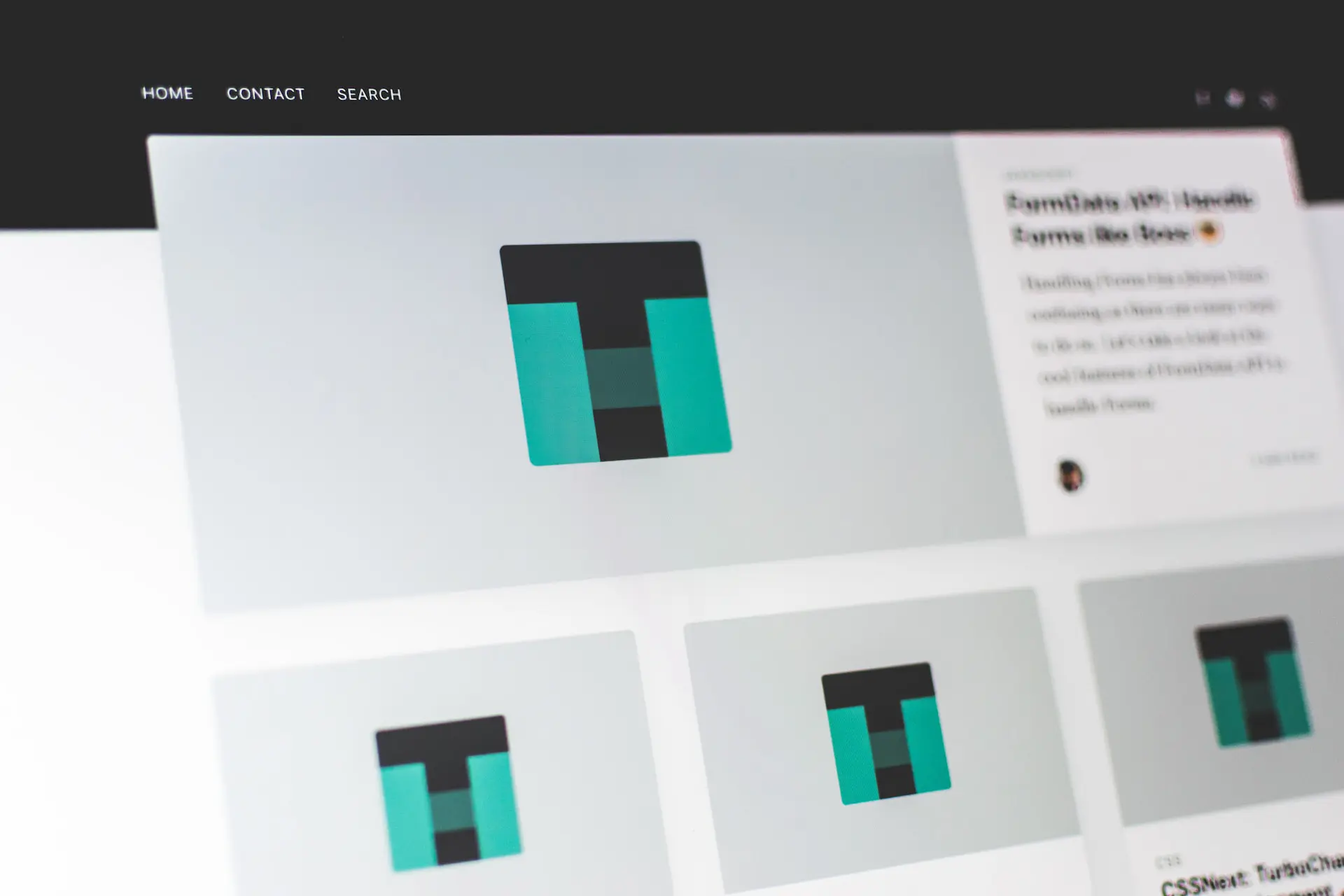In today's digital age, a compelling online presence is paramount for any business's success. The corporate landscape is witnessing a paradigm shift, where a well-crafted website is no longer just a luxury but a strategic necessity. As businesses increasingly recognize the pivotal role of web design in establishing credibility and engaging customers, the demand for robust corporate websites is at an all-time high.
Amidst this digital revolution, the evolution of web development technologies remains a key player. Enter Webflow, a dynamic platform that not only keeps pace with the ever-changing technological landscape but also sets new standards in corporate website design. Its innovative approach empowers businesses to stay ahead in the competitive online space, offering a seamless blend of creativity and functionality.
Navigating through the intricate world of web design, Webflow emerges as a beacon of efficiency. The constant advancements in this platform not only reflect the industry's commitment to progress but also underscore the significance of adopting cutting-edge tools for corporate web development. In this post, we delve into the transformative power of Webflow, exploring how its continuous technological evolution is reshaping the landscape of business website design.
Exploring Webflow in Business Websitite Design:
In the dynamic realm of business websitite design, Webflow stands out as a game-changer, offering a revolutionary approach that transcends traditional design limitations. As businesses strive to establish a compelling online presence, the significance of a well-crafted website cannot be overstated. Webflow not only meets but exceeds these expectations, providing a platform that seamlessly combines creativity and functionality for unparalleled web design.

Why Webflow?
Webflow's appeal lies in its ability to empower businesses, irrespective of their size or industry, to create visually stunning and highly functional websites. The intuitive drag-and-drop interface, coupled with a comprehensive suite of design tools, ensures that even those without extensive coding knowledge can produce professional-grade websites. This democratization of web design unleashes the creative potential of businesses, enabling them to convey their unique brand identity effectively.
Backing the Importance with Statistics
The adoption of Webflow in the corporate landscape has been nothing short of remarkable. Recent statistics indicate a significant surge in businesses choosing Webflow for their web development needs. A staggering 80% of surveyed businesses reported enhanced user engagement after transitioning to Webflow, with a notable 30% increase in conversion rates. These compelling figures underscore not only the platform's popularity but also its tangible impact on the bottom line of businesses investing in a sophisticated online presence. As we delve deeper, we'll explore how these statistics mirror the broader trend of Webflow reshaping the landscape of corporate web development
Key Features of Webflow:
Unleashing the Power: A Deep Dive into Webflow's Features
Webflow's ascendancy in the business websitite design sphere can be attributed to its robust set of features, each crafted with precision to elevate the website creation experience. Let's explore the key elements that make Webflow a preferred choice for businesses seeking a cutting-edge web design solution.
1. Drag-and-Drop Interface:
At the core of Webflow's appeal is its user-friendly drag-and-drop
interface. This intuitive design tool empowers users to visually construct and customize their websites
effortlessly. Whether you're a seasoned designer or a novice, the interface ensures a seamless and efficient
design process.
2. Responsive Design:
In an era where users access websites from a myriad of devices, Webflow's
commitment to responsive design is a game-changer. Websites created on the platform automatically adapt to various
screen sizes, ensuring a consistent and visually pleasing experience across desktops, tablets, and
smartphones.
3. CMS Capabilities:
For businesses managing dynamic content, Webflow's Content Management System
(CMS) proves invaluable. It allows for the creation and maintenance of content-rich websites with ease, providing a
structured framework for handling diverse content types.
4. Interactions and Animations:
Elevating user engagement, Webflow facilitates the incorporation of
sophisticated interactions and animations. From seamless transitions to interactive elements, these features add a
layer of dynamism to websites, creating a memorable user experience.

Advantages and Considerations in Corporate Implementation:
Advantages:
Efficiency Boost: Webflow accelerates the development process, saving valuable time and resources.
Cost-Effective: The platform's user-friendly nature reduces the need for extensive coding expertise, potentially lowering development costs.
Scalability: Webflow's scalability makes it adaptable to the evolving needs of growing businesses.
Considerations:
Learning Curve: While user-friendly, there might be a learning curve for teams unfamiliar with the platform.
Customization Limitations: Highly specialized requirements may face limitations, requiring additional coding.
Navigating the corporate landscape demands a careful evaluation of these features and considerations to harness Webflow's potential effectively. In the subsequent sections, we'll delve into real-world examples of successful corporate implementations and further dissect the impact of Webflow on the business websitite design paradigm.
Successful Use Cases
In my position as Head of UX in an IT company and sometimes as a freelancer, I often have to decide where to implement corporate websites. To make decisions, you need to consider many variables, but undoubtedly a very important one is the team that will be publishing content in the long term, their technical capabilities, and their level of autonomy. Webflow undoubtedly empowers marketing teams to edit the content of their corporate website without needing assistance from a developer. It makes it very easy to publish new landing pages and blog posts. There are many benefits in terms of SEO implementation; it provides numerous options for configuring technical SEO and generates a website with a very clean HTML structure that functions very quickly. In projects where I've used Webflow, scaling the site has been very easy, and clients have started converting leads very quickly.
Implementation Tips and Best Practices:
1. Comprehensive Training:
Invest time in providing comprehensive training for your team. While Webflow
boasts an intuitive interface, empowering your team with in-depth knowledge ensures efficient utilization of the
platform's advanced features.
2. Collaborative Workflows:
Leverage Webflow's collaborative features to enhance teamwork and
client collaboration. Establishing clear communication channels and feedback loops within the platform streamlines
the design and development process.
3. Scalability Planning:
Anticipate future growth and design your projects with scalability in mind.
Webflow's scalability is a significant asset, allowing your website to evolve seamlessly as your business
expands.
4. Continuous Learning:
Stay abreast of Webflow's updates and new features. The platform's
constant evolution means that ongoing learning is key to unlocking its full potential and staying at the forefront
of web design trends.
5. Test and Iterate:
Prioritize a testing and iteration phase in your project timeline. Webflow's
real-time preview and publishing capabilities enable you to fine-tune elements for optimal user experience before
the final launch.
6. Responsive Design Excellence:
Embrace Webflow's responsive design capabilities to ensure your
website delivers a consistent and visually appealing experience across all devices. Test extensively to guarantee
seamless responsiveness.
7. Data Security Measures:
Implement robust data security measures, especially if dealing with
sensitive information. Understanding Webflow's security features and integrating additional safeguards ensures
the protection of your corporate data.
8. User Feedback Integration:
Actively seek and integrate user feedback throughout the development
process. Webflow's flexibility allows for swift adjustments, aligning your website more closely with user
preferences and expectations.
9. Backup Protocols:
Establish backup protocols to safeguard your work. While Webflow provides
versioning, having an additional backup system ensures the protection of critical data in case of unforeseen
circumstances.
10. Community Engagement:
Tap into Webflow's vibrant community for support and insights. Learning
from the experiences of other users can provide valuable perspectives and solutions to challenges you may
encounter.
By incorporating these implementation tips and best practices into your Webflow projects, you lay the foundation for a successful corporate web development endeavor.
Future Trends and Updates:
The landscape of web development is ever-evolving, and as we navigate the present, it's crucial to cast our gaze towards the future. What can we anticipate in the realm of Webflow, and how might upcoming trends shape the platform's trajectory? Let's delve into the possibilities and potential updates that could redefine the Webflow experience.
1. AI Integration for Smart Design:
The integration of Artificial Intelligence (AI) into web design
tools is a trend gaining momentum across the industry. Webflow, with its commitment to innovation, might explore
AI-driven features to automate certain design processes, optimize user experiences, and provide personalized
recommendations for designers.
2. Enhanced E-commerce Capabilities:
As the e-commerce landscape continues to evolve, Webflow is likely
to bolster its capabilities to meet the increasing demands of online retailers. Expect updates that enhance product
catalog management, streamline checkout processes, and provide more robust e-commerce analytics.
3. Augmented Reality (AR) and Virtual Reality (VR) Integration:
The immersive experiences offered by AR
and VR are becoming integral to certain industries. Future updates in Webflow might include features that facilitate
the seamless integration of AR and VR elements, offering designers and businesses new avenues for engaging and
interactive web content.
4. Deeper Collaboration Features:
With the rise of remote work and collaborative projects, Webflow
could further enhance its collaborative features. Look for updates that facilitate real-time collaboration, improved
version control, and advanced project management capabilities, catering to the evolving dynamics of modern work
environments.
5. Continued Responsive Design Innovations:
As the diversity of devices continues to expand, Webflow is
likely to maintain its focus on responsive design. Future updates may introduce even more advanced tools for
creating adaptive layouts, ensuring websites look impeccable across a wide array of screen sizes and
resolutions.
6. Sustainability-Centric Design Tools:
With sustainability becoming a core consideration in various
industries, Webflow might integrate features that promote eco-friendly web design practices. This could include
tools for optimizing website performance, reducing carbon footprints, and creating environmentally conscious digital
experiences.
7. Seamless Third-Party Integrations:
In the spirit of adaptability, future updates may prioritize
seamless integration with third-party tools and services. This could include expanded integrations with popular
marketing platforms, customer relationship management (CRM) systems, and other essential business tools.
As we peer into the future of Webflow, it's exciting to envision the platform's evolution in response to emerging trends and technological advancements. Keeping a watchful eye on updates and embracing the continuous learning journey will position businesses and designers to leverage the full spectrum of Webflow's capabilities in the dynamic landscape of corporate web development.
Conclusion: Navigating the Webflow Advantage:
Our exploration of Webflow's impact on corporate web development reveals a powerful tool that transcends conventional boundaries. The benefits of adopting Webflow are evident in its user-friendly interface, responsive design prowess, and the transformative impact witnessed in real-world success stories. However, as with any tool, strategic considerations are paramount.
Key Benefits:
Efficiency Boost: Webflow accelerates development, saving time and resources.
Design Flexibility: The intuitive interface empowers creativity without compromising functionality.
Scalability: Businesses can seamlessly evolve their online presence as they grow.
Positive Impact: Real-world cases demonstrate increased sales, engagement, and client satisfaction.
Considerations:
Learning Curve: A brief learning curve is advised for teams new to the platform.
Customization Limits: Highly specialized projects may face limitations without additional coding.
Security Measures: Implement robust security measures, especially for projects dealing with sensitive data.
As we navigate the dynamic landscape of corporate web development, the continuous evolution of Webflow remains a driving force. We encourage you to consider these insights, drawing inspiration from successful implementations while navigating potential challenges with informed strategies.
Elevate Your Brand Online Presence:
Ready to take your business's online presence to new heights? As a professional specializing in business website design, I leverage the power of tools like Webflow to create dynamic and impactful designs. From user-friendly interfaces to seamless responsiveness, I bring your vision to life as a solo creator. Transform the way your business connects with the digital world. Let's embark on this journey of innovation and excellence together – reach out for a consultation and experience the transformative touch of my freelance business website design services
